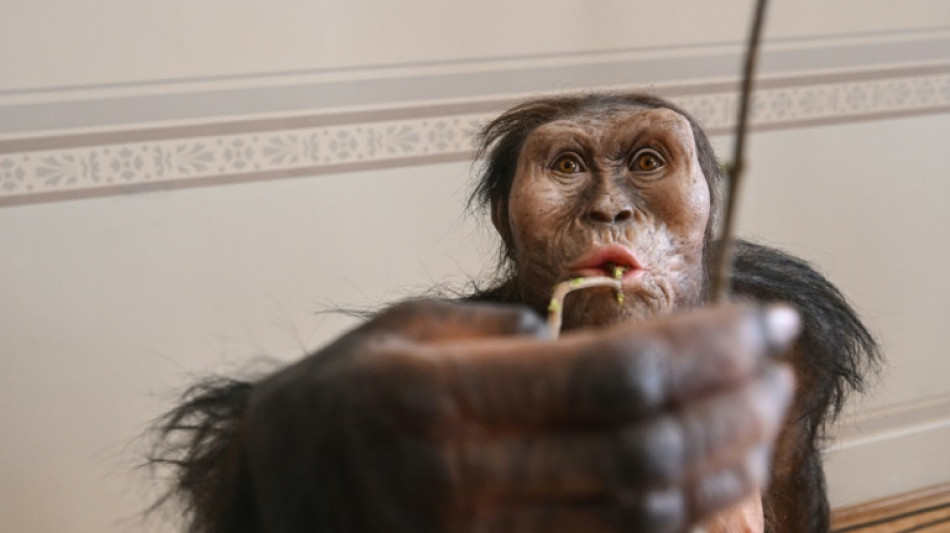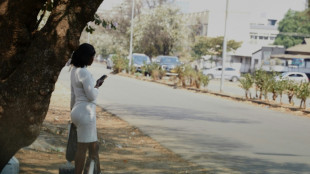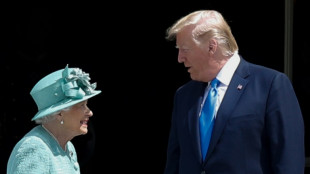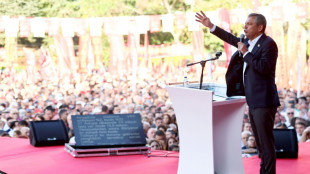
-
 Cluster bombs kill, wound over 1,200 in Ukraine since 2022: monitor
Cluster bombs kill, wound over 1,200 in Ukraine since 2022: monitor
-
Australia, Papua New Guinea to sign 'historic' defence deal

-
 Myanmar junta says no voting in dozens of constituencies
Myanmar junta says no voting in dozens of constituencies
-
Rubio to discuss Qatar aftermath, Gaza with Netanyahu

-
 Chinese factory, consumer activity slow amid economy struggles
Chinese factory, consumer activity slow amid economy struggles
-
US cuts leave Zimbabwe sex workers scrambling for alternatives

-
 Alonso's Real Madrid revitalised for new Champions League mission
Alonso's Real Madrid revitalised for new Champions League mission
-
Arsenal eye Champions League charge with revamped attack

-
 'No regrets': wounded Nepali protesters proud at change
'No regrets': wounded Nepali protesters proud at change
-
Key Emmys moments: Children, Colbert, women and politics

-
 'No regrets': wounded Nepalis protesters proud at change
'No regrets': wounded Nepalis protesters proud at change
-
'Adolescence,' 'The Studio' dominate television's Emmy Awards

-
 WTO fishing deal: the net results
WTO fishing deal: the net results
-
Malaysia's largest island state aims to be region's 'green battery'

-
 Philippines president says corruption scandal protests justified
Philippines president says corruption scandal protests justified
-
Asian markets fluctuate ahead of expected US rate cut

-
 UK aristocrat, partner face jail over baby daughter's death
UK aristocrat, partner face jail over baby daughter's death
-
Japan and Fiji cruise into Pacific Nations Cup rugby final rematch

-
 As King Charles hosts Trump, what do UK state visits entail?
As King Charles hosts Trump, what do UK state visits entail?
-
First-ever Tanzanian gold as Simbu dips past Petros in world marathon

-
 100 days later, US federal workers navigate post-Musk wreckage
100 days later, US federal workers navigate post-Musk wreckage
-
Rising oceans to threaten 1.5 million Australians by 2050: report

-
 Kipyegon bids for fourth 1500m world gold, Wanyonyi in loaded 800m
Kipyegon bids for fourth 1500m world gold, Wanyonyi in loaded 800m
-
'The Studio,' 'Severance' and 'Adolescence' among Emmy winners

-
 Trump and King Charles: heads of state with opposing personalities
Trump and King Charles: heads of state with opposing personalities
-
Scheffler surges to PGA Procore victory in Ryder Cup warm-up

-
 Bloody Sunday trial of British ex-soldier to open in Belfast
Bloody Sunday trial of British ex-soldier to open in Belfast
-
Trump heads for historic second UK state visit

-
 Turkey court tries case that could oust opposition leadership
Turkey court tries case that could oust opposition leadership
-
Simbu dips past Petros for world marathon gold

-
 Mexico's macabre Island of the Dolls inspires Tim Burton and Lady Gaga
Mexico's macabre Island of the Dolls inspires Tim Burton and Lady Gaga
-
Television stars shine bright on Emmys red carpet

-
 'The Studio' claims early win as TV's Emmys kick off
'The Studio' claims early win as TV's Emmys kick off
-
Japan rips Tonga to reach Pacific Nations Cup rugby final

-
 Australia's ANZ bank hit with record fine over 'widespread misconduct'
Australia's ANZ bank hit with record fine over 'widespread misconduct'
-
Eagles top Chiefs in Super Bowl rematch as Cowboys edge Giants in NFL thriller

-
 Seattle's Raleigh hits 54th homer of season for MLB marks
Seattle's Raleigh hits 54th homer of season for MLB marks
-
NFL Cowboys top Giants in overtime while Lions maul Bears

-
 Trump concerned S. Korean arrests could 'frighten' investors
Trump concerned S. Korean arrests could 'frighten' investors
-
Timeless Modric opens AC Milan account with winner against Bologna

-
 Spring quick-fire hat-trick helps Racing stun Bordeaux-Begles
Spring quick-fire hat-trick helps Racing stun Bordeaux-Begles
-
Macau's first 'patriots' election sees low turnout

-
 Prince Harry says has 'clear conscience' over explosive memoir
Prince Harry says has 'clear conscience' over explosive memoir
-
Modric opens AC Milan account with winner against Bologna

-
 Schroeder seals Euro basketball title for world champions Germany
Schroeder seals Euro basketball title for world champions Germany
-
Hull wins LPGA Queen City title after Jeeno four-putt bogey at 18

-
 Spain's political class spars over chaotic Vuelta finale
Spain's political class spars over chaotic Vuelta finale
-
Top four into Women's Rugby World Cup semi-finals as France edge Ireland

-
 Two ships set sail from Greece to join Gaza aid flotilla
Two ships set sail from Greece to join Gaza aid flotilla
-
Amorim won't change despite 'suffering' in dismal Man Utd run


Human ancestors making 'bone tech' 1.5 million years ago, say scientists
Our ancestors were making tools out of bones 1.5 million years ago, winding back the clock for this important moment in human evolution by more than a million years, a study said Wednesday.
Ancient humans -- also called hominins -- such as the robust Australopithecus are known to have used fragments of bones to dig up tubers from termite mounds.
Even today our closest living relative, chimpanzees, use sticks in a similar way to dig out termites for a tasty treat.
And more than two million years ago, hominins were using crude stone tools in Tanzania's Olduvai Gorge, one of the world's most important prehistoric sites.
But there were no known examples of anyone systematically making bone tools more than 500,000 years ago -- until now.
At Olduvai, a Spanish-led team of researchers found 27 tools made out of the leg and arm bones of big mammals, mainly elephants and hippos.
The discovery "sheds new light on the almost unknown world of early hominin bone technology," they wrote in a study in the journal Nature.
To the untrained eye, the tools might seem like random bits of bone.
But for the researchers, they are proof of the remarkable cognitive abilities of our distant ancestors, showing they were capable of choosing the appropriate material and fashioning it for their needs.
"There is a clear desire to change the shape of the bone to turn them into very heavy, long tools," Francesco d'Errico, an archaeologist at France's Bordeaux University and study co-author, told AFP.
The unknown hominins used rocks as hammers to shape the bones. The resulting tools ranged from 20 to 40 centimetres (eight to 15 inches) long, some weighing up to a kilo.
"In some cases there are even notches in the middle of the bone, possibly so they could hold it better in their hands," d'Errico said.
The big, pointy tools are thought to have been used to butcher the carcasses of large animals.
- From axes to needles -
At the time, stone tools were being made in a far more rudimentary manner.
Very few large stone tools have been found at Olduvai, d'Errico said, possibly because the quartz available at the site was not well-suited to the difficult job of cutting up big animals.
It was the Acheulean culture, which was emerging in Africa at around the same time, that first cut stones into hand axes, also called bifaces.
This invention represented a major advance, making it possible for ancient humans to properly slice or skin their prey.
"The hypothesis of the study is that the bone-cutting at Olduvai is an original invention, during a moment of transition to bifaces," d'Errico said.
According to this theory, the bone techniques developed at Olduvai disappeared from the planet for a million years.
It would eventually reappear in places such as the area of modern-day Rome, where a lack of good big rocks spurred hominins to carve elephant bones into hand axes.
It is also possible that the techniques continued throughout the years "but these bones have not been properly identified in other archaeological sites," d'Errico said.
As the human line evolved, so did the sophistication of the tools we carved out of bone.
For example, the first needles with eyes were made from bone in China and Siberia, only arriving in Europe around 26,000 years ago, d'Errico said.
But that is another "very long story," he added.
B.Wyler--VB
